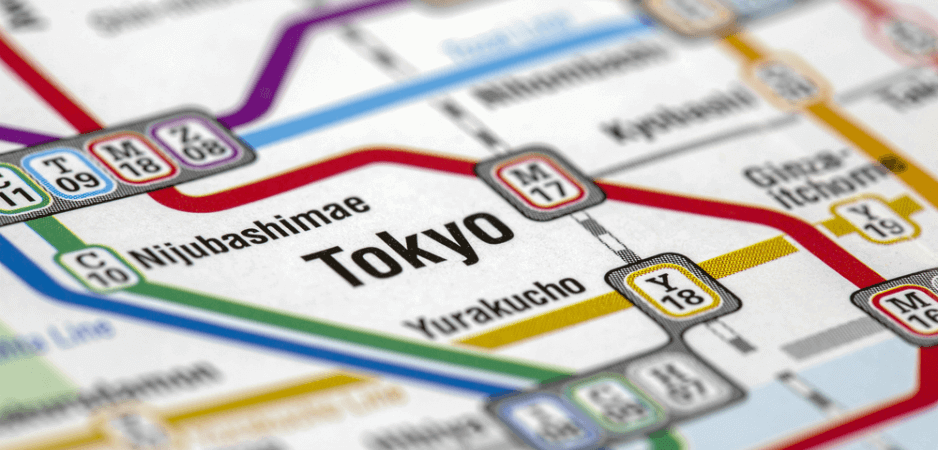On that fatal March morning in 1995, Aum Shinrikyō tried to mount an attack that would cause so much indiscriminate carnage that it would actually bring down the government.
The execution by hanging in Tokyo on July 6 of the “doomsday cult” leader Shoko Asahara and six of his followers has revived unwelcome memories in Japan of one of the most traumatic events in its recent history. On March 20, 1995, a “new religion” that called itself Aum Shinrikyō (ohm religion of truth) staged one of the most horrific terrorist attacks of recent times, releasing lethal quantities of sarin gas simultaneously on five trains of the Tokyo subway system, killing 13 commuters and injuring about 6,000 more. Although not comparable in terms of lives lost, when it comes to emotional impact this event was Japan’s 9/11, but with one important difference that made it even more shocking to the Japanese: The perpetrators turned out to be their fellow citizens, rather than foreign terrorists.
This shocking incident was a product of the most deadly mix of religion and politics in recent Japanese history and, in a way that seems significantly representative of the age, it had been perpetrated not by adherents of any of the traditional Shinto or Buddhist sects, but by followers of one of the multitude of postmodern “new religions” that had sprung up in the latter half of the 20th century — in other words, since the defeat of “traditional Japan” in the Pacific War. Aum’s teachings represented a veritable smorgasbord of world religious traditions, with fragments drawn from Hinduism, Yoga, Vedanta, Tantric Buddhism, Zen, Christianity and rival new religions — all of it given a unique “twist,” of course, as it passed through the rather over-heated brain of the self-styled “ultimate liberated master,” Asahara himself, whose worldview seemed to have been shaped, again in a very postmodern way, by science-fiction cartoons and comic books as much as by his readings in the sacred texts of global religions.
Under the leadership of their nearly-blind, strangely charismatic leader, the Aum sect had at first tried to acquire political power by “legitimate” democratic means, running 25 candidates of their so-called Shinri-tō (truth party), including Asahara himself, in the house of representatives elections of 1990. Soundly rejected by the Japanese electorate, the group withdrew from mainstream society and began to act in the “cult-like” manner familiar from other such groups around the world, growing increasingly hermetic, paranoid and violent.
Finally, on that fatal March morning in 1995, it tried to mount an attack that would cause so much indiscriminate carnage, especially among the many government bureaucrats who used those subway lines that all converged on Kasumigaseki — the political heart of the national capital — that it would actually bring down the government. Furthermore, because Asahara and his closest disciples were now living in a fantasy world, immune to any ulterior checks on their sense of reality, they were also convinced that the government’s downfall would compel the Japanese nation to accept the Aum guru himself not only as their spiritual savior, but as their new emperor, thus actualizing his long-held ambition for limitless political power.
In other words, Asahara aimed to effect an abrupt and radical transformation of what the Japanese call the kokutai, the national polity centered around the emperor. Unlike many previous right-wing terrorists, his goal was not to “restore” the emperor but to replace him.
From a practical viewpoint, of course, Asahara’s attempted coup d’état was a feeble and inept affair, ridiculous apart from its tragic consequences. But it also seemed to many observers symptomatic of serious, deeper and wider, discontents, anxieties and uncertainties in the Japanese society of its day, a general sense that something was wrong with the body politic and perhaps even with the nation’s “spiritual condition.” Certainly Asahara encouraged exactly this interpretation of the terrorist incident he launched. By 1995, he had taken to seeing himself as a manifestation of the destructive side of the Hindu god Shiva and justified his murderous attack by claiming that it would “purify” a “decadent” Japanese society.
Politically, Aum may be regarded as a proto-fascist movement — in the sense defined by Umberto Eco. Speaking of the essential characteristics of what he calls “Ur-Fascism” — that is, fascism in its most basic and universal form — Eco explains the origins of fascism’s “Armageddon complex,” in words that seem perfectly applicable to Aum (indeed, Asahara adopted the Christian idea of Armageddon in precisely the way Eco specifies): “Since enemies have to be defeated, there must be a final battle, after which the movement will have control of the world.”
Indeed, had Asahara actually achieved his political ambitions, he would have created a new form of Japanese fascism, more revolutionary than the 1930s variety in its total rejection of the 19th-century Meiji kokutai and closer to the “revolutionary” European fascism that broke completely with the established authorities of the past. As it turned out, sarin gas was not the only thing he borrowed from the Nazis; his worldview had much in common with theirs — even to the reductio ad absurdum of a Japanese religious leader espousing anti-Semitism. In January 1995 “the sect formally declared war on the Jewish people, which it described … as ‘the hidden enemy’ and ‘the world shadow government,’” echoing traditional Nazi and other anti-Semitic propaganda, and even accusing some of their wealthy and cosmopolitan compatriots of being “Jewish Japanese.”
This bizarre episode in recent Japanese history still continues to provoke intense debate as to its ultimate “meaning” for contemporary Japan. Was it a terrible “one-off” or an augury of things to come? Was it a symptom of a widespread malaise among a well-educated younger generation disenchanted with modern-day Japan’s materialistic “economic animal” lifestyle? (Some of the Aum members were products of the country’s most elite universities.) And what will be its long-term impact on the Japanese people’s (already rather lukewarm) attitude to religion? There can be no definitive answer to these questions, but in 2018 we may at least sound one cautiously optimistic note: Nothing remotely like this terrible event has happened in the intervening 23 years.
The views expressed in this article are the author’s own and do not necessarily reflect Fair Observer’s editorial policy.
Photo Credit: Goran Bogicevic / Shutterstock.com
Support Fair Observer
We rely on your support for our independence, diversity and quality.
For more than 10 years, Fair Observer has been free, fair and independent. No billionaire owns us, no advertisers control us. We are a reader-supported nonprofit. Unlike many other publications, we keep our content free for readers regardless of where they live or whether they can afford to pay. We have no paywalls and no ads.
In the post-truth era of fake news, echo chambers and filter bubbles, we publish a plurality of perspectives from around the world. Anyone can publish with us, but everyone goes through a rigorous editorial process. So, you get fact-checked, well-reasoned content instead of noise.
We publish 2,500+ voices from 90+ countries. We also conduct education and training programs
on subjects ranging from digital media and journalism to writing and critical thinking. This
doesn’t come cheap. Servers, editors, trainers and web developers cost
money.
Please consider supporting us on a regular basis as a recurring donor or a
sustaining member.
Will you support FO’s journalism?
We rely on your support for our independence, diversity and quality.







